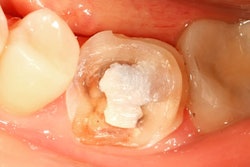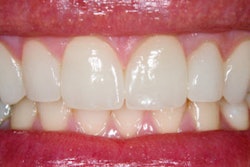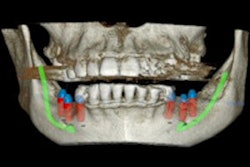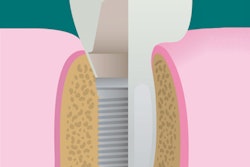
With more than 5 million dental implants being placed annually in the U.S. alone, and time being our greatest commodity, knowing how to predictably and efficiently impression them is key.
Some impression materials make this easy, meaning:
- Stringing six-plus units together aside, we don't need to shift gears to an open tray.
- Supporting our sulcus doesn't beg us to add resin or acrylic to our impression posts to develop our emergence profile.
Those are excellent techniques. They also take time.
So, if your practice is like mine, you're passionate about quality, and you value your chair time, make sure your impression materials have the three qualities discussed below.
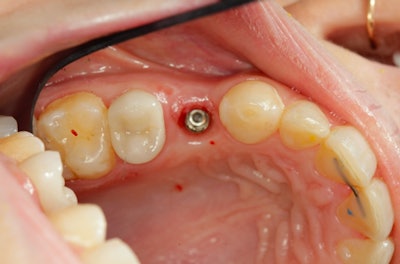 All images courtesy of David Rice, DDS.
All images courtesy of David Rice, DDS.1. Optimum flow
Above is a typical sulcus for a dental implant. By design, we're 3-mm subgingival. Our goal is an emergence profile that's easy to clean, and easily allows our restoration to disappear.
In the past, accurately capturing that meant I needed to support that tissue by customizing my impression post.
Today, when my materials have optimum flow, with great precision, I can predictably and repeatedly get to the depth of that sulcus 360°.
2. Advanced wetting with dimensional stability
With tremendous detail, we need to reproduce the soft and hard tissues -- not just to capture them, but to capture them exactly as they are. On the soft-tissue side, this makes our implant inserts simple as we have the exact pressure on the tissue we're looking for. I don't know about you, but I don't enjoy seeing heavily blanched tissue that needs me to polish my implant abutment/crown back.
On the hard-tissue side, what do we know? We know, proximally, we need to nail the contact. Dental implants have no periodontal ligament (PDL); natural teeth do. We also have significant research on the intensity these contacts need to be. If we're light, in three years, we're open. If we're heavy, in three years, we have a different problem because our patients will not floss.
Occlusally, we also know some things. There is nothing earth-shattering in the new department except this: The zirconia crown is fast becoming the posterior crown material of choice. How fun is that to adjust? How fun is it to repolish?
We have to unite advanced wetting with dimensional stability.
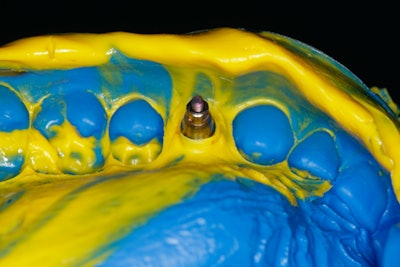
3. High tear strength
Take a good luck at our impression above. This happens to be one of my favorite materials, Virtual XD by Ivoclar Vivadent.
What do you see? What don't you see?
We work too hard to gain isolation and retraction to pull an impression and see anything less. This is an example of all three qualities at work.
Optimum flow allowed me to get to full depth and width of the sulcus. Advanced wetting and dimensional stability give me all the details and all the confidence that I can pass the baton to my favorite lab without issue.
High tear strength is exactly what you see. Perfect buccal, lingual, occlusal, and, best of all, gingival embrasures. No one likes a black triangle!
Friends, I'm guessing this is a weekly, if not daily, procedure in your practice. Implant systems matter. Placement and restorative plans matter. Your materials matter. Choose wisely.
The comments and observations expressed herein do not necessarily reflect the opinions of DrBicuspid.com, nor should they be construed as an endorsement or admonishment of any particular idea, vendor, or organization.




